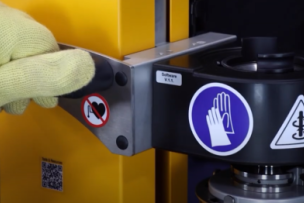In light of the unfortunate 737 Max grounding, Tier 1 aerospace parts suppliers for Boeing have been catching up to production schedules and demands that had been hard to meet. While most of the attention is on Boeing and how it’s affecting the bottom line and economy, Tier 1 suppliers are keeping up with backlog demand and other Boeing aircraft schedules. Now, everyone awaits the FAA’s determination and Boeing’s updated timelines.
Boeing, the largest commercial aircraft maker in the world, has had a challenging year—in part due to the trade war and in part because of the grounding of one of its heavily ordered planes, the 737 Max. This aircraft experienced two tragic crashes in Asia and Africa, and consequently, the plane has been grounded since March.
What Was the Cause of the Boeing 737 Max Accidents?
The 737 Max crashes have been linked to issues with its sophisticated maneuvering augmentation software—and the company has worked on improvements. Fixes are currently being reviewed by the Federal Aviation Administration and regulators in the EU and other parts of the world. But there is no timetable yet for the 737 Max grounding to be lifted.
This week, lead FAA Administrator Steve Dickson told air traffic controllers that the aircraft would not be back “until I am satisfied it is the safest thing out there,” according to Reuters.
But if you’re a Tier 1 subcontractor that makes Boeing parts, you are expecting the aircraft to be back in production on Boeing’s timetable—whenever that happens. Subcontractors have to manage an expected production backlog, something they are used to, as Boeing has been keeping these manufacturers incredibly busy over the past five to 10 years.
In 2018, Boeing built and delivered 806 airplanes, up from 763 in 2017, according to The Seattle Times. Production rates have been heavy for several years. The 737 Max will certainly affect 2019’s numbers, but Tier 1 makers are diversified and using the time wisely.
“After the 737 MAX safety ban in March, Boeing cut 737 monthly production from 52 aircraft to 42 and halted deliveries, cutting off a key source of cash and hitting margins,” writes Reuters.
Some Tier 1 suppliers have kept minimum production levels to help avoid falling behind when the aircraft inevitably makes it back into full production as some schedule slides have come in over the summer for the 737 Max.
In an analyst call this week, Boeing says it is hopeful it can get the aircraft back in service by the end of this year, but commercial carriers, such as Southwest Airlines, United Airlines and others have made alternative scheduling plans.
The entire 737 Max situation is estimated to cost Boeing $8 billion. The cost of nondelivery to the carriers for Boeing is estimated to be roughly $500 million so far, per Reuters.
We explore how the Max 737 grounding has affected Tier 1 aerospace manufacturers.
Tier 1 Boeing Suppliers: No Major Impact to Date
The manufacturing landscape is challenging. Some economists find the manufacturing sector to be in a recession. For subcontractors that build engines and parts for the 737 Max and other Boeing planes, however, manufacturers remain busy. MSC associates we spoke to say that business for Tier 1 suppliers continues to be strong despite a less-than-ideal situation for Boeing.
Why’s that? Two reasons: Most Tier 1 suppliers were already behind the production demand—and many of the players are diversified across other aerospace and defense OEMs, including Airbus, Raytheon, Pratt & Whitney, and others.
“When everything happened in March, our Tier 1 suppliers that work with Boeing were told not to slow down on anything yet, just keep going, just keep making parts,” says Kevin Dowden, an MSC sales associate who is based in the Seattle area. Around July, however, the first schedule slides for the 737 Max came in, Dowden explains. Dowden has been working with aerospace manufacturers for the last 12 years.
“What that slowdown did was enable Tier 1 suppliers that I work with regularly to get caught up on other production demands from other Boeing lines,” says Dowden. “Most of them are caught up or close to being caught up. So they’re now waiting for orders to start up again on the 737 Max process.”
Dowden’s pulse on Tier 1 activity and catch-up work is echoed by the engine-maker CFM. CFM’s LEAP-1B engine is the sole option for the 737 Max.
“By maintaining a high production rate throughout the grounding, CFM quickly made this ground up and now is back on schedule, which should help to smooth re-entry to service, which is inevitably going to be heavily scrutinized,” writes David Archer of consultancy IBA in Engine Yearbook 2020, according to MRO Network’s “CFM Benefits from Max Breathing Space” article.
“There’s been no real pain here, I have not seen a slowdown,” says Scott Jensen, an MSC sales associate with 30 years of aerospace manufacturing experience who is also based in the Seattle area. “I’ve heard from some of my customers that Boeing had wanted to go to 61 or 62 737 Max planes a month. … In the ’90s, when Boeing went to 42 planes a month, that sent this area over the edge. It was a crazy number.”
“My customers, for production purposes, are using a fictional number for deliveries,” says Jensen. “Say the target from Boeing had been 52 a month. My customers are putting the number at 38. And then they’re going into production to keep their machines running, and to not fall too far behind, because they know it’s coming.”
Some of Jensen’s customers have a hundred 80-foot-long machines with multiple spindles on two bridges with three spindles each. He has another customer with an entire building full of eight-spindle machines, where the machines are 50 feet long, and they’re making eight parts at a time.
These parts, many of them very big, include engine mounts, wing boxes, flaperons, flap tracks and others.
“The engine mounts are tricky because they’re all made out of Inconel and are heat-treated to about 50 Rockwell,” says Jensen.
Who Could Be Hurt by a Complete or Temporary Boeing 737 Max Shutdown? Smaller Shops
The 737 Max situation is a little more volatile for those smaller shops that are not as diversified across aerospace and defense OEMs, Jensen explains, but only if you are imagining the worst-case scenario—which is not all that likely.
Yet, given how unpredictable things have been to date, it’s something the industry does have to keep tabs on. Boeing CEO Dennis Muilenburg stated to Wall Street analysts that the manufacturer “may consider cutting or halting 737 production if return-to-service assumptions change,” according to Reuters.
“If Boeing were to temporarily shut down the 737 Max production for two to three months, it might mean Boeing temporarily lays off several thousand workers, which isn’t great for about 10 to 20 percent of small, niche machine shops,” says Jensen. “Some may go under because they can’t afford to be down for several months.”
And they really can’t afford to have their talented machinists not working for them. Aerospace machinists are some of the highest in-demand roles in manufacturing. Given the need for machinists across the country, it would not be hard for experienced machinists to find new work.
“The problem that we have in this area right now, and any machine shop will tell you, is that they just don’t have the people,” says Jensen. “There are just not enough people. Boeing has hired up all the best people.”
![]() Go deeper. Learn about CNC shops competing with aerospace manufacturers for talent. Read “The Challenges of Retaining Aerospace Machinists.”
Go deeper. Learn about CNC shops competing with aerospace manufacturers for talent. Read “The Challenges of Retaining Aerospace Machinists.”
Jensen explains that generally what happens when there’s a production halt or grounding is that overtime hours are adjusted. So if assembly and quality control were booking 50-plus hours a week, Boeing will generally cut them back to 40 hours—then ramp them back up to those 50-plus hours when an aircraft is reinstated.
A complete shutdown might allow shops in the region to pick up talent from Boeing. But we’re a long way from that scenario.
“Right now, the only aerospace shops I see having issues are the ones that have lost contracts—and not won new ones,” says Dowden. “Many companies have adapted and spread the work across a variety of aerospace OEMs, including Bombardier, Beechcraft, Bell Helicopter, and Sikorsky.”





Talk to Us!
How can you ask if Boeing should be allowed to start Max production when they have never shut production down? They have produced over 300 maxes since the grounding started.
28MRI fabricates critical components for the nitrogen system for the center fuel tanks on the MAX and the NG. We are going all out to catch up on orders.
27Leave a reply
Your email address will not be published. Required fields are marked *